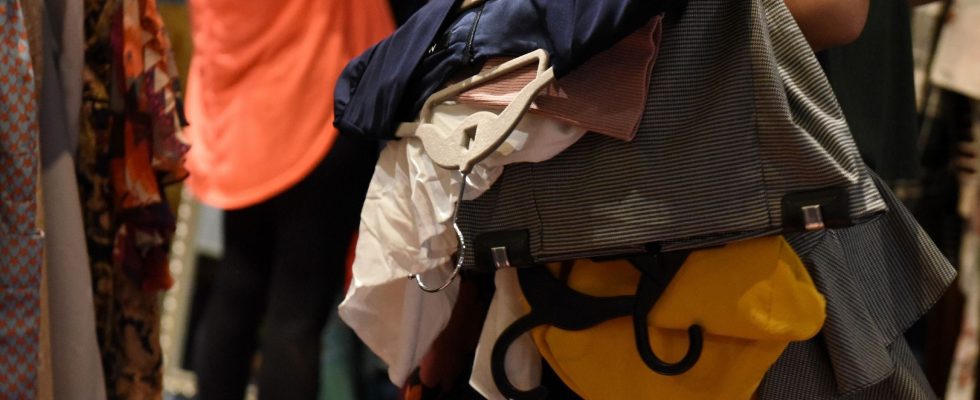Bercy’s credibility has been further shaken. One after the other, the Banque de France and INSEE last week revised their macroeconomic expectations for 2024. The first, led by François Villeroy de Galhau, first lowered to 0.8%, compared to 0.9% previously, its growth forecast for the current year. It was then INSEE’s turn to correct its estimate for the first quarter, going from 0.2% to 0%. A reason for hope nevertheless remains for the following quarter: GDP growth is now expected at 0.3%, compared to 0.1% in February. However, the government’s 1% growth objective, although revised downwards a few weeks ago, is already in decline. Will salvation come from the recovery in consumption, the key driver of the French economy?
Thanks to disinflation, household spending should, according to INSEE, increase in the first half of the year, particularly in food. These data, collected by the statistics institute, come from national accounts and constitute the first tool for measuring the evolution of consumption and therefore the purchasing power of the French. But at a time of the second-hand boom and the proliferation of transactions between individuals, do these figures still accurately reflect reality? “These statistics obey the rules of national accounting, which takes into account the relationships between major economic players – households, businesses and public administrations – without being interested in exchanges within the same entity. As long as we stick to this orthodoxy, we will be dealing with curious results,” believes Philippe Moati, co-founder of the Society and Consumption Observatory.
Result: the consumption figure published by INSEE is today underestimated. If certain items such as energy or food are not affected, others show significant differences such as clothing or housing equipment. Is there a chance that these rules will change? “They are the subject of an international consensus. The institutes are extremely conservative. I recommended in a report to change the current indicators, in which the French did not recognize themselves. The proposal was brushed aside. hand”, says the economist.
Behaviors modified by inflation
INSEE publishes well every five years – in principle – its “Family Budget” survey, which includes purchases, sales, rentals and exchanges between individuals. “It’s the most reliable source,” judges economist Pascale Hébel, associate director at C-Ways. However, its last publication dates from 2017 and the next is not expected before 2026. “This survey is valuable, but heavy. Moreover, it is published with a considerable delay. We are always looking in the rearview mirror”, regrets Philippe Moati . Because consumer behavior can change very quickly. The return of inflation has been a reminder: the rise in prices has permanently changed the way products are purchased.
“flea markets and the C2C (consumer to consumer) market are gaining momentum. The rise in prices has accelerated this phenomenon and has, for example, pushed people to resell their goods to benefit from additional income,” recalls Flavien Neuvy, director of the Cetelem Observatory. This is reflected in the figures. “We are seeing for the first time the number of new vehicles registered decrease. The same goes for telephones, furniture, or large household appliances. On the other hand, there is a subject on clothing which continues to grow despite the progression of the second hand”, explains Pascale Hébel. New environmental considerations also come into play. “These are lasting developments,” assures Flavien Neuvy.
How to evaluate mutual aid or barter?
Still, these trends remain very difficult to quantify. “If I take the example of BlaBlaCar, there is a transaction on the site with a bank trace and an intermediary who himself publishes his accounts. Where it becomes complicated is when people organize themselves on their own. side. How to evaluate mutual aid or barter? For the most part, there is no invoice, no VAT”, continues the expert. Vinted, the leading textile e-commerce site in France, charges a commission on each sale of clothing. Then, the final amount is not taken into account in the data collected by INSEE. “There is no way to control the number of pieces,” notes Pascale Hébel.
More in-depth investigations, based on the declaration, could possibly make it possible to draw up a more realistic picture of the situation in order to measure the weight of the opportunity. But the task is not so simple. “It calls on memory, with the limits that this can cause,” underlines Philippe Moati. “When we try to decipher behavior, we know that the surveys are reliable. But when we try to evaluate the value of the exchanges, there is always a little mistrust on the part of those questioned,” affirms for his part Flavien Neuvy. The second-hand market – which today is worth more than seven billion euros – has in any case not finished developing. After a certain point, it will become impossible to ignore in national data.
.
